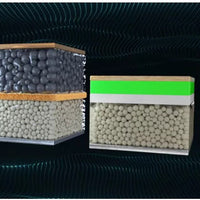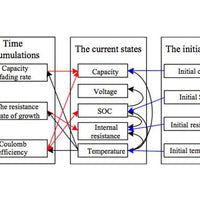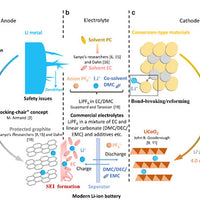Off-grid inverter
The off-grid inverter is a complete system solution with modular components, consisting of manageable building blocks: the inverter/charger, the solar charging controller, the automatic generator starter module, and the system control panel.
Grid-connected inverter
Grid-connected inverters are generally divided into photovoltaic power generation grid-connected inverters, wind power generation grid-connected inverters, power equipment grid-connected inverters, and other power generation equipment grid-connected inverters. The biggest characteristic of the grid-connected inverter is its high power and low cost.
Grid inverter with large photovoltaic power station is commonly used in the system, many parallel photovoltaic groups of the string are connected to a single centralized inverter dc input, the use of the general power three-phase IGBT power modules, the use of smaller power field-effect transistor, at the same time using DSP conversion controller to improve the quality of the output power, making it very close to the sine wave current.
How to distinguish the grid-connected inverter from the off-grid inverter?
First of all, the photovoltaic inverter is also known as a photovoltaic inverter power regulator. According to the use of inverters in distributed photovoltaic power generation systems, we can divide them into two types: independent type (off-grid type) and grid-connected type. The classification of these two types is mainly about the use of the photovoltaic power generation system.
Second, according to the waveform modulation mode of the inverter itself, it can be divided into square wave inverter, stepped wave inverter, sine wave inverter, and combined three-phase inverter.
Third, the photovoltaic power grid system can be divided into transformer inverter and transformer-free inverter. This is mainly a classification of photovoltaic inverters from different requirements of grid-connected systems.
The difference between grid-connected inverters and off-grid inverters
No matter the off-grid inverter or grid-connected inverter from the appearance of the simple and no essential difference, the focus is on the "core", that is, the inverter itself on the difference in function.
The grid-connected inverter's biggest difference is not to do any storage battery, from the solar panels generated by direct current directly through the inverter into alternating current to the public power network, but also have a certain threshold to comply with the relevant safety regulations and policies of the local power grid, otherwise, it is unable to provide grid-connected.

The off-grid inverter as the name suggests is out of the system of the public power grid, will be to the solar panels first direct current (DC) is stored in the storage battery, and then by the battery to the inverter within the off-grid inverter is alternating current (AC), can be directly used to load, can also be returned to the storage battery, for which there is no electricity network coverage in remote areas, such as desert, plateau, deep forest belt is used, can provide electricity demand anytime and anywhere.









0 comments